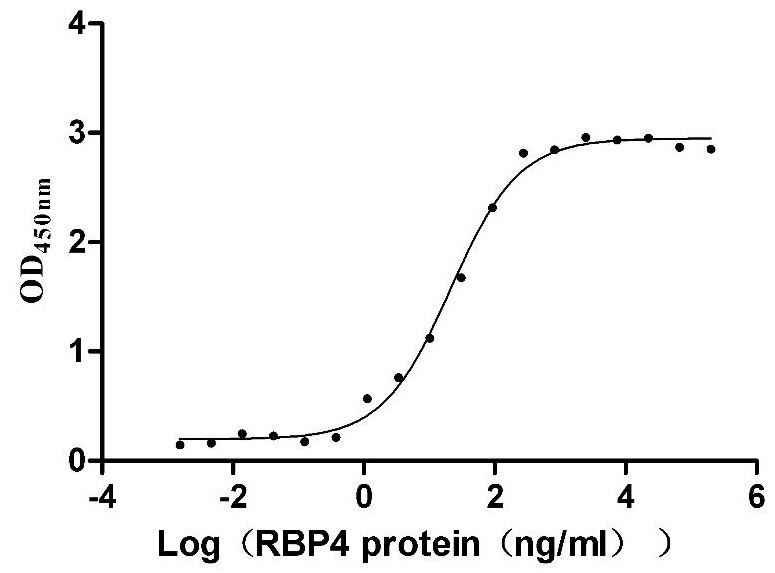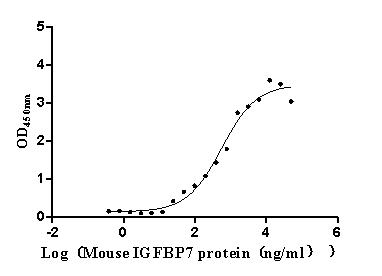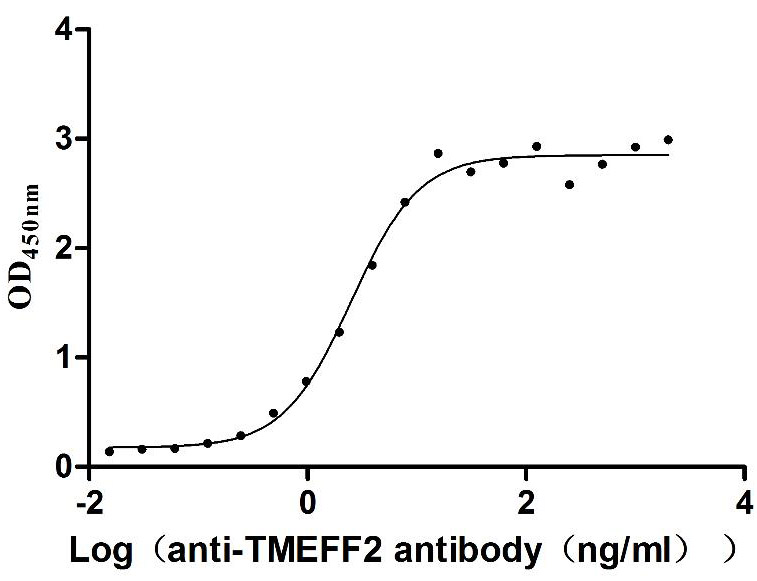Recombinant Human Pantothenate kinase 2, mitochondrial (PANK2)
-
中文名称:人PANK2重组蛋白
-
货号:CSB-YP874850HU
-
规格:
-
来源:Yeast
-
其他:
-
中文名称:人PANK2重组蛋白
-
货号:CSB-EP874850HU
-
规格:
-
来源:E.coli
-
其他:
-
中文名称:人PANK2重组蛋白
-
货号:CSB-EP874850HU-B
-
规格:
-
来源:E.coli
-
共轭:Avi-tag Biotinylated
E. coli biotin ligase (BirA) is highly specific in covalently attaching biotin to the 15 amino acid AviTag peptide. This recombinant protein was biotinylated in vivo by AviTag-BirA technology, which method is BriA catalyzes amide linkage between the biotin and the specific lysine of the AviTag.
-
其他:
-
中文名称:人PANK2重组蛋白
-
货号:CSB-BP874850HU
-
规格:
-
来源:Baculovirus
-
其他:
-
中文名称:人PANK2重组蛋白
-
货号:CSB-MP874850HU
-
规格:
-
来源:Mammalian cell
-
其他:
产品详情
-
纯度:>85% (SDS-PAGE)
-
基因名:PANK2
-
Uniprot No.:
-
别名:4933409I19Rik; AI642621; C20orf48; Hallervorden Spatz syndrome; HARP; hPANK2; HSS; MGC118448; MGC15053; mitochondrial; NBIA1; PANK2; PANK2_HUMAN; Pantothenate kinase 2 (Hallervorden Spatz syndrome); Pantothenate kinase 2; Pantothenate kinase 2 mitochondrial; Pantothenic acid kinase 2; PKAN; RP23 387C21.4
-
种属:Homo sapiens (Human)
-
蛋白长度:Full Length of Mature Protein
-
表达区域:47-570
-
氨基酸序列SLSL DGGTVNPPRV REPTGREAFG PSPASSDWLP ARWRNGRGGR PRARLCSGWT AAEEARRNPT LGGLLGRQRL LLRMGGGRLG APMERHGRAS ATSVSSAGEQ AAGDPEGRRQ EPLRRRASSA SVPAVGASAE GTRRDRLGSY SGPTSVSRQR VESLRKKRPL FPWFGLDIGG TLVKLVYFEP KDITAEEEEE EVESLKSIRK YLTSNVAYGS TGIRDVHLEL KDLTLCGRKG NLHFIRFPTH DMPAFIQMGR DKNFSSLHTV FCATGGGAYK FEQDFLTIGD LQLCKLDELD CLIKGILYID SVGFNGRSQC YYFENPADSE KCQKLPFDLK NPYPLLLVNI GSGVSILAVY SKDNYKRVTG TSLGGGTFFG LCCLLTGCTT FEEALEMASR GDSTKVDKLV RDIYGGDYER FGLPGWAVAS SFGNMMSKEK REAVSKEDLA RATLITITNN IGSIARMCAL NENINQVVFV GNFLRINTIA MRLLAYALDY WSKGQLKALF SEHEGYFGAV GALLELLKIP
-
蛋白标签:Tag type will be determined during the manufacturing process.
The tag type will be determined during production process. If you have specified tag type, please tell us and we will develop the specified tag preferentially. -
产品提供形式:Lyophilized powder
Note: We will preferentially ship the format that we have in stock, however, if you have any special requirement for the format, please remark your requirement when placing the order, we will prepare according to your demand. -
复溶:We recommend that this vial be briefly centrifuged prior to opening to bring the contents to the bottom. Please reconstitute protein in deionized sterile water to a concentration of 0.1-1.0 mg/mL.We recommend to add 5-50% of glycerol (final concentration) and aliquot for long-term storage at -20℃/-80℃. Our default final concentration of glycerol is 50%. Customers could use it as reference.
-
储存条件:Store at -20°C/-80°C upon receipt, aliquoting is necessary for mutiple use. Avoid repeated freeze-thaw cycles.
-
保质期:The shelf life is related to many factors, storage state, buffer ingredients, storage temperature and the stability of the protein itself.
Generally, the shelf life of liquid form is 6 months at -20°C/-80°C. The shelf life of lyophilized form is 12 months at -20°C/-80°C. -
货期:Delivery time may differ from different purchasing way or location, please kindly consult your local distributors for specific delivery time.Note: All of our proteins are default shipped with normal blue ice packs, if you request to ship with dry ice, please communicate with us in advance and extra fees will be charged.
-
注意事项:Repeated freezing and thawing is not recommended. Store working aliquots at 4°C for up to one week.
-
Datasheet :Please contact us to get it.
相关产品
靶点详情
-
功能:Catalyzes the phosphorylation of pantothenate to generate 4'-phosphopantothenate in the first and rate-determining step of coenzyme A (CoA) synthesis. Required for angiogenic activity of umbilical vein of endothelial cells (HUVEC).; Catalyzes the phosphorylation of pantothenate to generate 4'-phosphopantothenate in the first and rate-determining step of coenzyme A (CoA) synthesis.
-
基因功能参考文献:
- We found c.966 G>T (p.Glu322Asp) mutation in the PANK2 gene mutation analysis in the individuals from the brain imaging findings. Although individuals in this family who had a homozygous mutation in PANK2 gene analyses had the 'eye-of-the-tiger' sign and atypical disease, they were noted to have differing clinical findings. PMID: 30226968
- Results from a study on gene expression variability markers in early-stage human embryos shows that PANK2 is a putative expression variability marker for the 3-day, 8-cell embryo stage. PMID: 26288249
- The key finding of the study encompassed the detection of a novel PANK2 gene mutation in a child of Chinese ethnicity with PKAN. The PANK2 gene c.A650G, as well as c.T1341G, mutations may be potential mutation hotspots in children with PKAN in Mainland China. PMID: 29642163
- PANK2 mutations have an effect on iPSC-derived cortical neuronal cells in culture PMID: 28863176
- These findings provide direct evidence that PANK2 malfunctioning is responsible for abnormal phenotypes in human neuronal cells of pantothenate kinase-associated neurodegeneration patients. PMID: 27516453
- A deleterious homozygous four-nucleotide deletion causing frameshift deletion in PANK2 gene (c.1426_1429delATGA, p.M476 fs) was identified in an 8 years old girl with dystonia, bone fracture, muscle rigidity, abnormal movement, lack of coordination and chorea. PMID: 28821231
- Results show that overexpression of PANK2 results in substantial elevated level of Co-A in skeletal muscle in transgenic mice which displays reduced skeletal muscle mass and significantly impaired exercise tolerance and grip strength. PMID: 28189602
- Homozygous PANK2 mutations in 22 PKAN patients from 13 Turkish families. PMID: 28113101
- We aim to present a case of a healthy infant born after intracytoplasmic sperm injection-in vitro fertilization (ICSI-IVF) with a preimplantation genetic diagnosis (PGD) for pantothenate kinase-associated neurodegeneration (PKAN) due to PANK2 mutation PMID: 27815806
- Tissue or cellular hypoxic/ischemic injury within the globus pallidus may underlie the pathogenesis of pantothenate kinase-associated neurodegeneration due to PANK2 mutations and apoE aggregates. PMID: 26547561
- Mutations in PANK2 and CoASY lead, respectively, to PKAN and CoPAN forms of Neurodegeneration with brain iron accumulation . Mutations in PLA2G6 lead to PLAN. Mutations in C19orf12 lead to MPAN PMID: 25668476
- Data suggests that the c.680 A>G mutation in the PANK2 gene alone is not sufficient to determine acanthocytic shape transformation in erythrocytes but some additional factor(s)/condition(s) are necessary for acanthocytosis to occur. PMID: 25915509
- Novel PANK2 gene mutations and clinical features in patients with pantothenate kinase-associated neurodegeneration. PMID: 24689511
- study presents 2 siblings who were homozygous for a novel c.695A>G (p.Asp232Gly) missense mutation in exon 2 of PANK2 gene; index patient presented with a 5-year history of slowly progressive gait disturbance, dysarthria, mild axial rigidity and bradykinesia PMID: 24655737
- Caucasian patients have more complex presentations than Asians. Exon 3 and 4 are hot spots for screening PANK2 mutations in Asian patients. PMID: 24348190
- we describe the clinical, radiological, and molecular find-ings of a classic PKAN patient of Iranian descent with a novel frameshift mutation in the coding region of the PANK2 gene PMID: 23116688
- Identification of novel compound heterozygous mutations in PANK2 gene in two Chinese siblings with atypical pantothenate kinase-associated neurodegeneration. PMID: 22930366
- Mutations in both PANK2 and C19orf12 contributed significantly to neurodegeneration with brain iron accumulation in the Iranian patients PMID: 23166001
- Skin fibroblasts from pantothenate kinase-associated neurodegeneration patients highlight a possible molecular relationship between Pank2 deficiency and iron misregulation. PMID: 22692681
- The c.1319G>C (p.R440P) mutation appears to be a founder genotype among Korean patients with Pantothenate kinase-associated neurodegeneration. PMID: 22103354
- study used global metabolic profiling to explore the metabolic consequences of mutations in pantothenate kinase 2 that are responsible for Pantothenate Kinase-Associated Neurodegeneration PMID: 22221393
- This study identified that new mutation of Pantothenate kinase associated with neurodegeneration. PMID: 21442655
- PANK2 mutations are not invariably associated with the "eye-of-the-tiger sign (early onset generalised dystonia and basal ganglia abnormalities) PMID: 20551478
- Progressive delayed-onset postanoxic dystonia - First example of PKAN symptom onset possibly provoked by environmental trigger (anoxia) PMID: 20925075
- the patient reported here shows a peculiar PKAN clinical phenotype probably based on new mutations identified in the PANK2 gene PMID: 20721927
- findings validate expression of the short PANK2 isoform and enable predictions about potentially deleterious sequence variants in the regulatory region of this human disease gene PMID: 20603201
- two Japanese siblings with the adult-onset slowly progressive type of pantothenate kinase-associated neurodegeneration who were found to have a novel PANK2 mutation PMID: 20006850
- Missense mutaions in PANK2 gene were observed in two siblings with Hallervorden- Spatz syndrome PMID: 14639680
- The presence of mutation in the PANK2 gene is associated with younger age at onset and a higher frequency of dystonia, dysarthria, intellectual impairment, and gait disturbance. Parkinsonism is seen predominantly in adult-onset patients PMID: 14743358
- Adult-onset focal dystonia was the presenting sign of pantothenate kinase-associated neurodegeneration (PKAN) in a patient with a novel homozygous missense mutation (C856T) PMID: 15390030
- Direct sequencing of the neurodegeneration patient's genomic DNA revealed homozygous base substitutions in the pantothenate kinase gene (PANK2): the A764-->G substitution (N245S) due to consanguinity of her parents. PMID: 15465096
- These results suggest that neurodegeneration with brain iron accumulation (NBIA; formerly Hallervorden-Spatz disease) is caused by altered neuronal mitochondrial lipid metabolism caused by mutations disrupting PanK2 protein levels and catalytic activity. PMID: 15659606
- Novel compound heterozygous mutations (Asp268Gly and Ile391Asn) in the PANK2 gene in a Chinese patient with Hallervorden-Spatz Syndrome PMID: 15747360
- PANK2 gene mutations can cause Hallervorden-Spatz syndrome in Chinese patients. PMID: 15793782
- The authors report clinical and genetic findings of 16 patients with PKAN. The authors identified 12 mutations in the PANK2 gene, five of which were new. PMID: 15911822
- The 1142_1144delGAG mutation of PANK2 probably originated from one common ancestor at the beginning of the ninth century, approximately 38 generations ago PMID: 16240131
- Unique biochemical features of the PanK2 isoforms suggest that catalytic defects may not be the sole cause for the neurodegenerative phenotype. PMID: 16272150
- We demonstrate that the G521R mutation results in an unstable and inactive protein in tremor-predominant neurodegeneration. PMID: 16450344
- PANK2 mutations are not associated with some adult degenerative conditions PMID: 16962235
- PanK2 is located in the mitochondria to sense the levels of palmitoylcarnitine and up-regulate CoA biosynthesis in response to an increased mitochondrial demand for the cofactor to support beta-oxidation PMID: 17242360
- expression of PanK2 was higher in human brain compared to mouse brain PMID: 17825826
- Pantothenate kinase-associated neurodegeneration is an autosomal-recessive disorder associated with the accumulation of iron in the basal ganglia associated with mutations in the PANK2 gene. PMID: 17903678
- Two novel PANK2 gene mutation in Pantothenate Kinase-Associated Neurodegeneration. PMID: 18006953
- Focal hand dystonia showed atypical phenotype of PANK2 gene mutations. PMID: 18074375
- a novel missense mutation (P354L) in exon 4 of the PANK2 gene in an adolescent with classic pantothenate kinase-associated neurodegeneration was identified PMID: 18239249
- In this report identified a novel mutation( in the PANK29p.D378G and p.D452G )gene responsible for PKAN and confirmed that PKAN has a board spectrum of phenotype, even among siblings with same mutations. PMID: 19224615
- Identified two alternatively used first exons resulting in distinct isoforms, one of which carries an N-terminal extension with a predicted mitochondrial targeting signal. PMID: 12554685
- An unconventional translational start codon, CUG, which is polymorphic in the general population is proposed. PANK2 is predicted to localize to mitochondria, with a 29 amino acid mitochondrial targeting sequence identified. PMID: 15105273
- Demonstrated that the mitochondrial isoform is sequentially cleaved at two sites by the mitochondrial processing peptidase, generating a long-lived 48 kDa mature protein localized to mitochondria of neurons in human brain. PMID: 15659606
显示更多
收起更多
-
相关疾病:Neurodegeneration with brain iron accumulation 1 (NBIA1); Hypoprebetalipoproteinemia, acanthocytosis, retinitis pigmentosa, and pallidal degeneration (HARP)
-
亚细胞定位:[Isoform 1]: Mitochondrion. Mitochondrion intermembrane space. Nucleus.; [Isoform 2]: Cytoplasm.; [Isoform 3]: Cytoplasm.; [Isoform 4]: Cytoplasm.
-
蛋白家族:Type II pantothenate kinase family
-
组织特异性:Expressed in the brain (at protein level). Ubiquitous. Highly expressed in the testis. Expressed in the umbilical vein endothelial cells (HUVEC).
-
数据库链接:
Most popular with customers
-
Recombinant Human Heat-stable enterotoxin receptor (GUCY2C), partial (Active)
Express system: Mammalian cell
Species: Homo sapiens (Human)
-
Recombinant Human Insulin growth factor-like family member 1 (IGFL1) (Active)
Express system: Mammalian cell
Species: Homo sapiens (Human)
-
Recombinant Human R-spondin-1 (RSPO1), partial (Active)
Express system: Mammalian cell
Species: Homo sapiens (Human)
-
Recombinant Human C-X-C chemokine receptor type 4 (CXCR4)-VLPs (Active)
Express system: Mammalian cell
Species: Homo sapiens (Human)
-
Recombinant Human Intestinal-type alkaline phosphatase (ALPI) (Active)
Express system: Mammalian cell
Species: Homo sapiens (Human)
-
Recombinant Mouse Transthyretin (Ttr) (Active)
Express system: Mammalian cell
Species: Mus musculus (Mouse)
-
Recombinant Mouse Complement component C1q receptor (Cd93), partial (Active)
Express system: Mammalian cell
Species: Mus musculus (Mouse)
-
Recombinant Human Tomoregulin-2 (TMEFF2), partial (Active)
Express system: Mammalian cell
Species: Homo sapiens (Human)


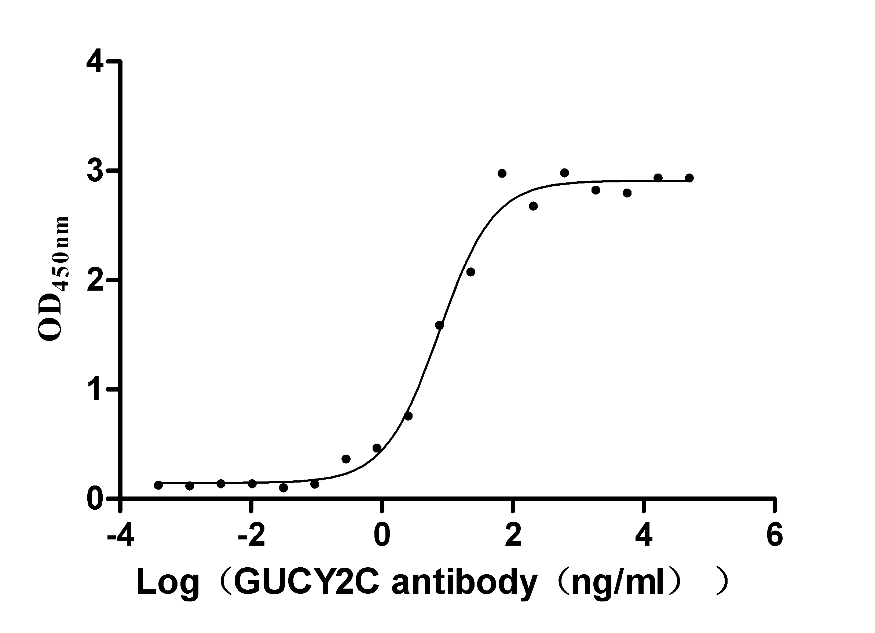
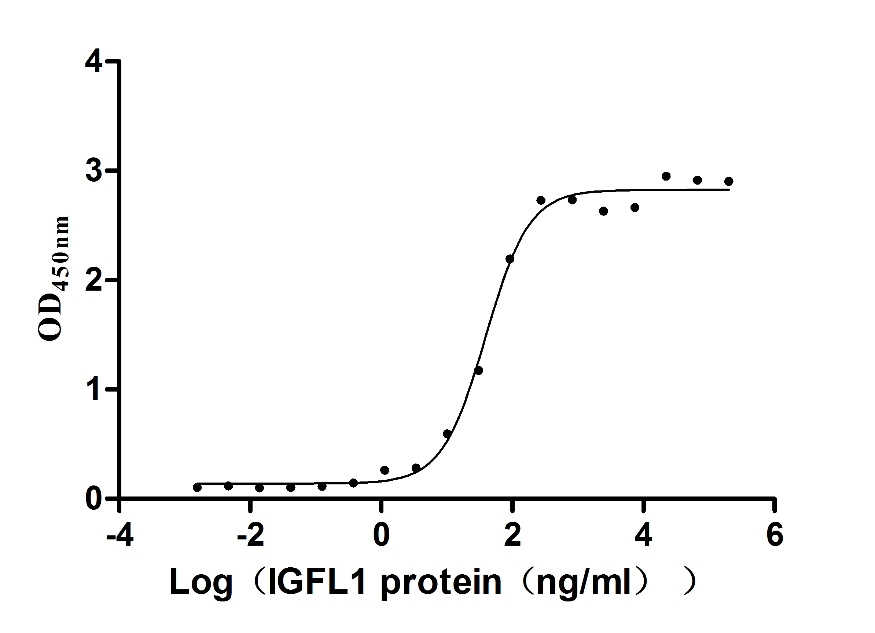
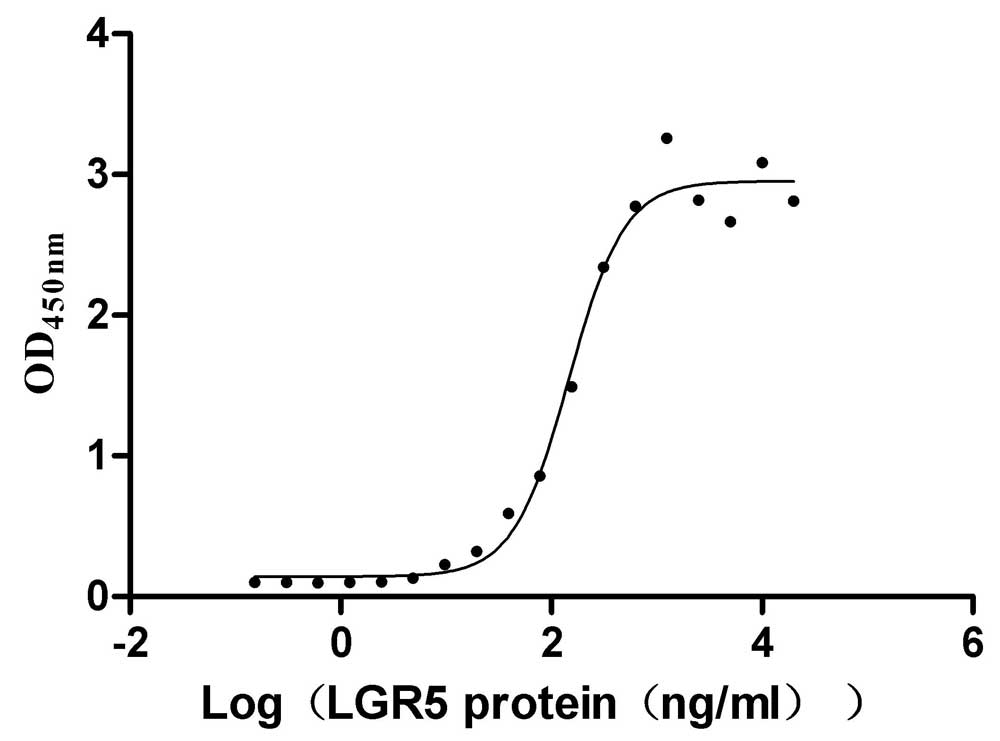
-AC1.jpg)

